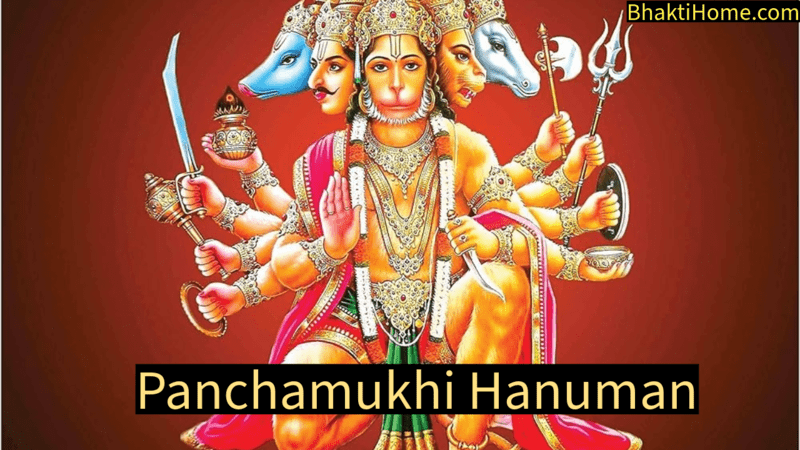
Panchamukhi Hanuman
Lord Hanuman's Panchmukhi (Five-Faced) Avatar is believed to symbolize the five cardinal directions. His five faces are interpreted as representations of the East, West, North, South, and Upper directions.
Panchmukhi Hanuman, also known as Panchamukhi Anjaneya Swamy, is considered to be one of his colossal (Virat - विराट ) forms. One manifestation features five imposing faces, all of which belong to Hanuman, while the other, more renowned form, depicts five majestic faces, each attributed to a distinct deity, namely:
- Lord Hanuman / Vaanar (हनुमान / वानर): [East Facing] - Positioned facing east with unwavering devotion, worshiping Hanuman aids in cleansing sins and bestows peace, purity, happiness, and fulfillment. This is also known as Vanar Mukh.
- Lord Narasingha (नरसिंह / नृसिंह): [South Facing] - As the fourth incarnation of Lord Vishnu, this lion-man form faces south. Devotion to Narasimha dispels fear, granting devotees fearlessness and victory.
- Lord Garuda (गरुड़ ): [West Facing] - Positioned facing west, Garuda, the eagle, is a constituent of the Panchmukhi Hanuman manifestation. Garuda provides protection against negative influences, black magic, and evil spirits.
- Lord Varaha (वराह): [North Facing] - Facing north, Varaha, the boar incarnation, is believed to counteract the adverse effects of planetary movements. Varaha grants devotees wealth and prosperity.
- Lord Hayagriva / Ashwa (हयग्रीव / अश्व ): [Upward Facing] - This form of Vishnu, with a human body and a horse's face gazing upwards, bestows knowledge, progeny, and liberation.
Story of Panchmukhi Hanuman Avtar
The tale behind Lord Hanuman assuming the Panchmukhi (Five-Faced) form is steeped in mythology. According to legend, following his defeat by Lord Rama in battle, Ravana (रावण) sought aid from his step brother Ahiravan (अहिरावण).
Ahiravan devised a cunning scheme to trap Lord Rama and his allies by lulling them into slumber. Subsequently, he seized Lord Rama and Lord Lakshman, spiriting them away to the underworld, known as Paatal Lok. Upon awakening, Vibhishan discerned Ahiravan's treachery and implored Lord Hanuman to venture into Paatal Lok and rescue the captive brothers.
Hanuman embarked on this mission and upon reaching Paatal Lok, he vanquished Makardhwaj before confronting Ahiravan.
Ahiravan (अहिरावण ), protected by a boon, could only be killed by one who could extinguish five lamps simultaneously.
Exploiting this condition, Ahiravan lit lamps in all five directions. In response, Hanuman assumed the Panchmukhi form and swiftly extinguished all five lamps at once, thereby ending Ahiravan's life.
This heroic feat led to the worship of Lord Hanuman in his Panchmukhi form.

